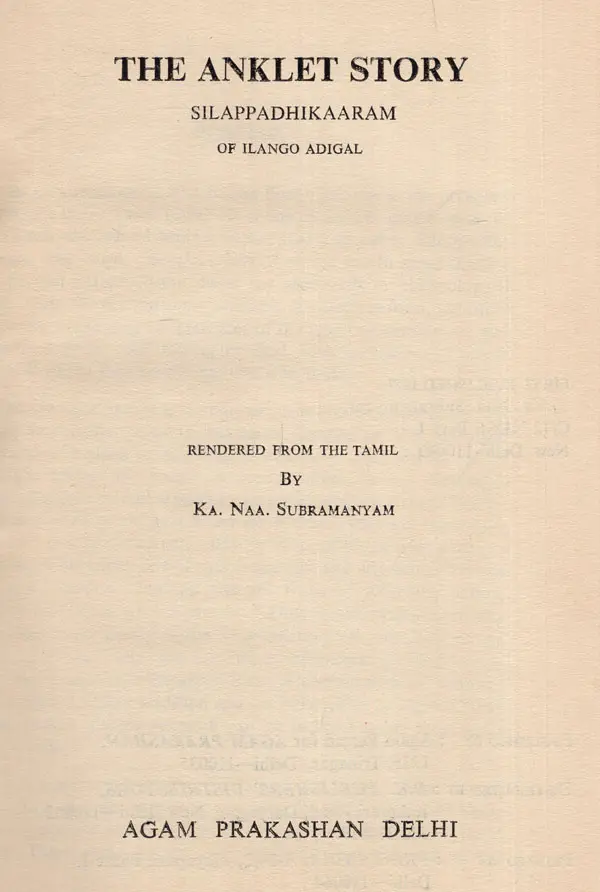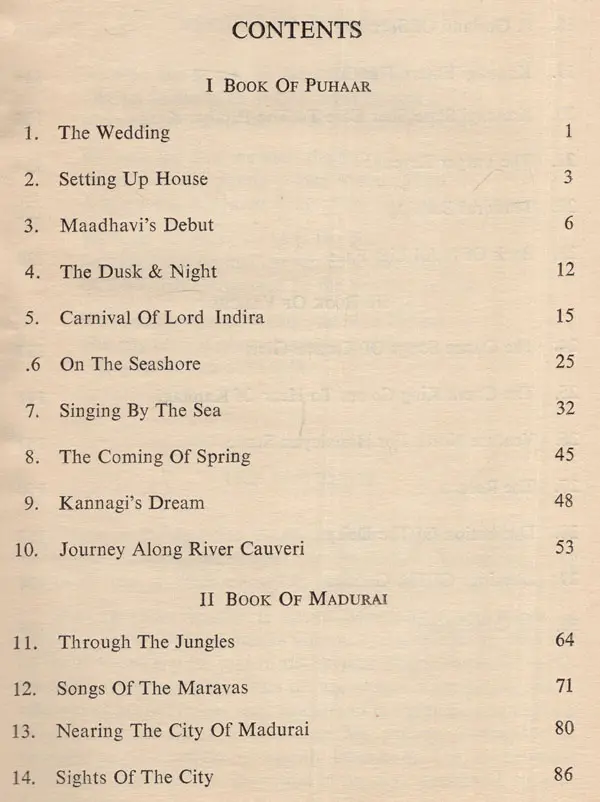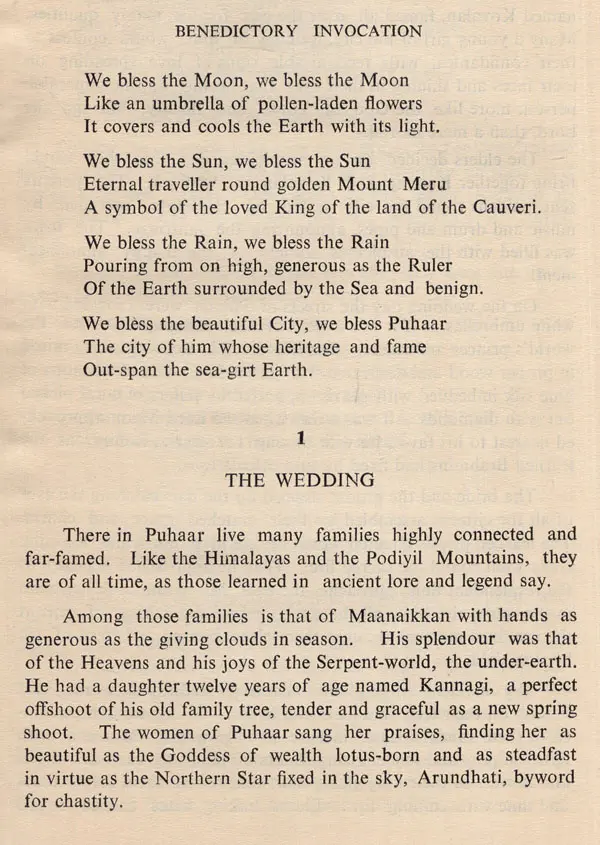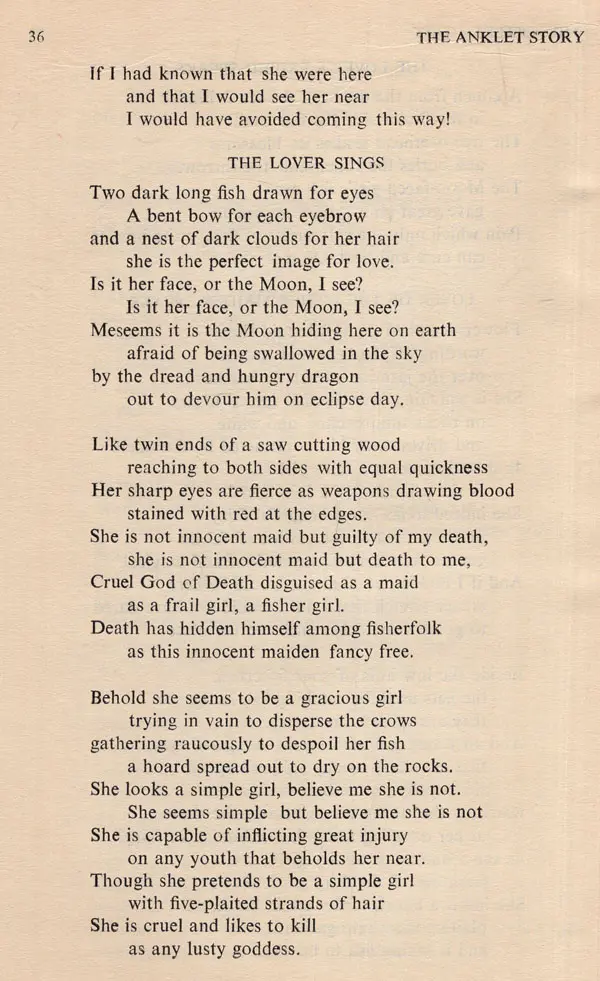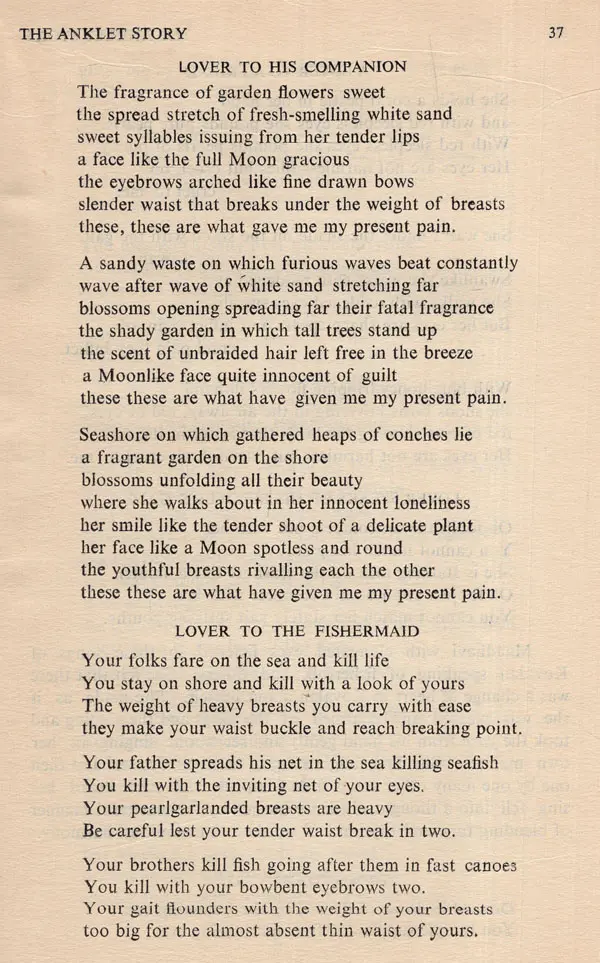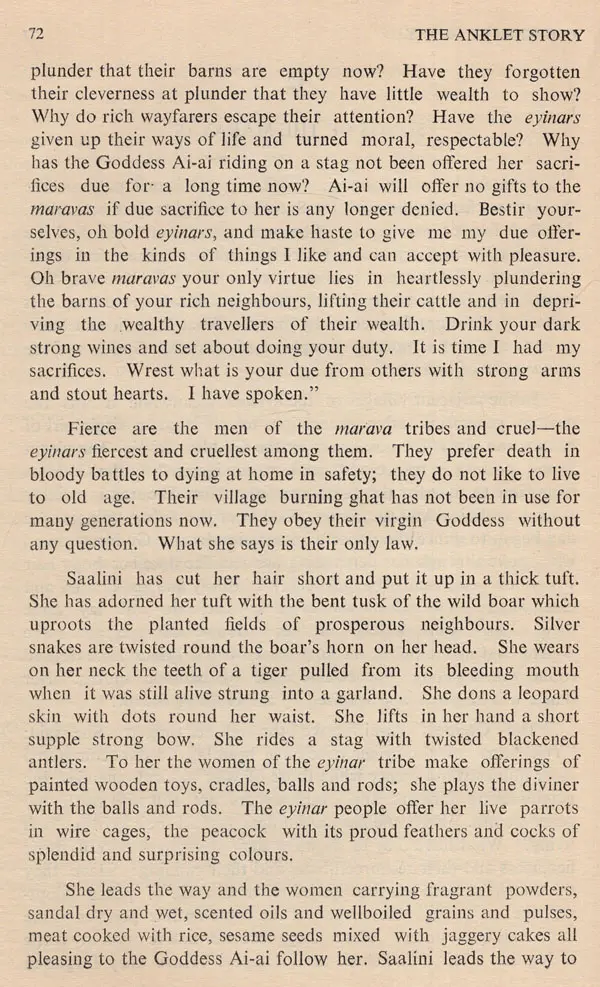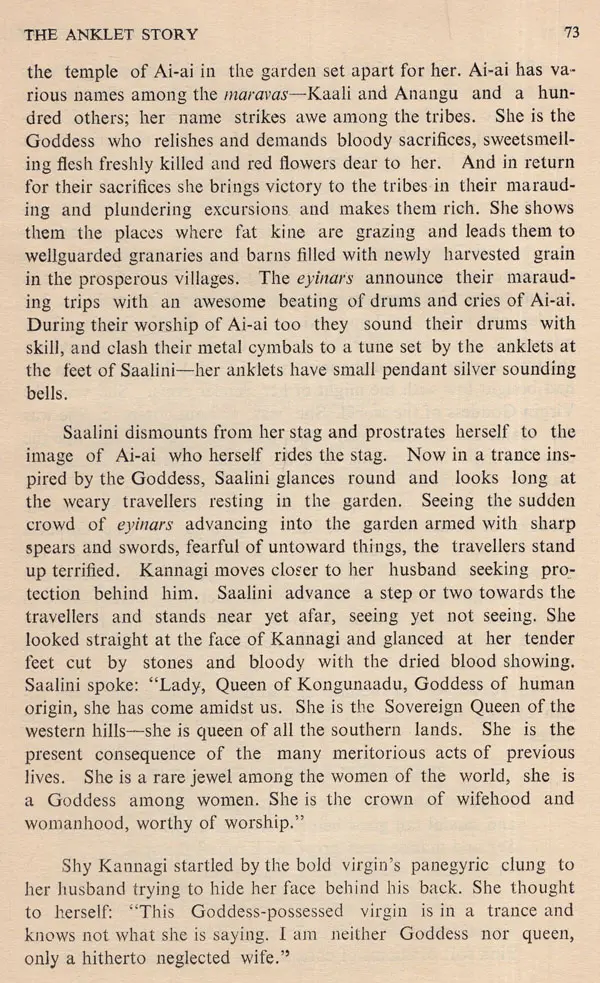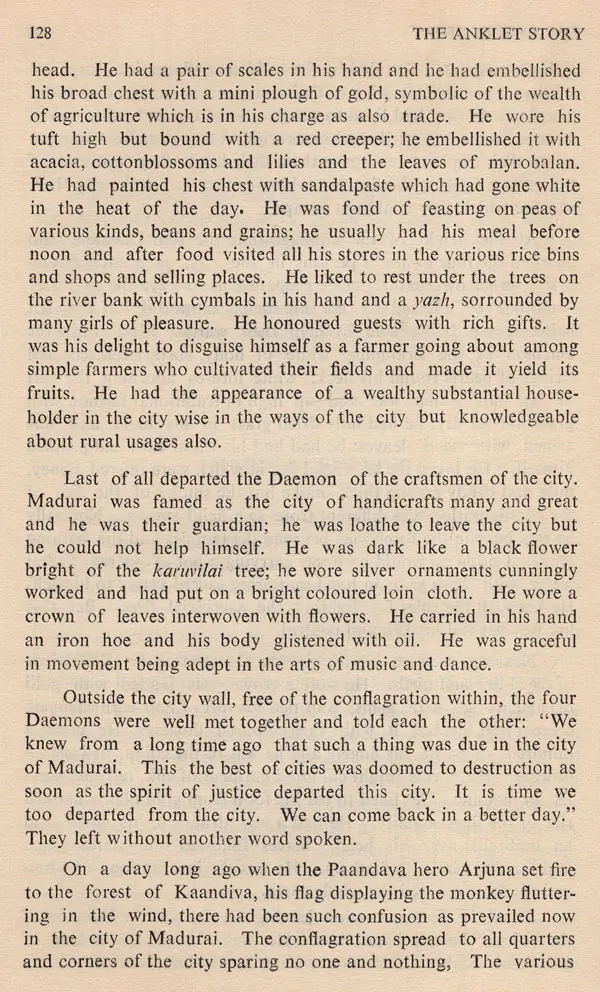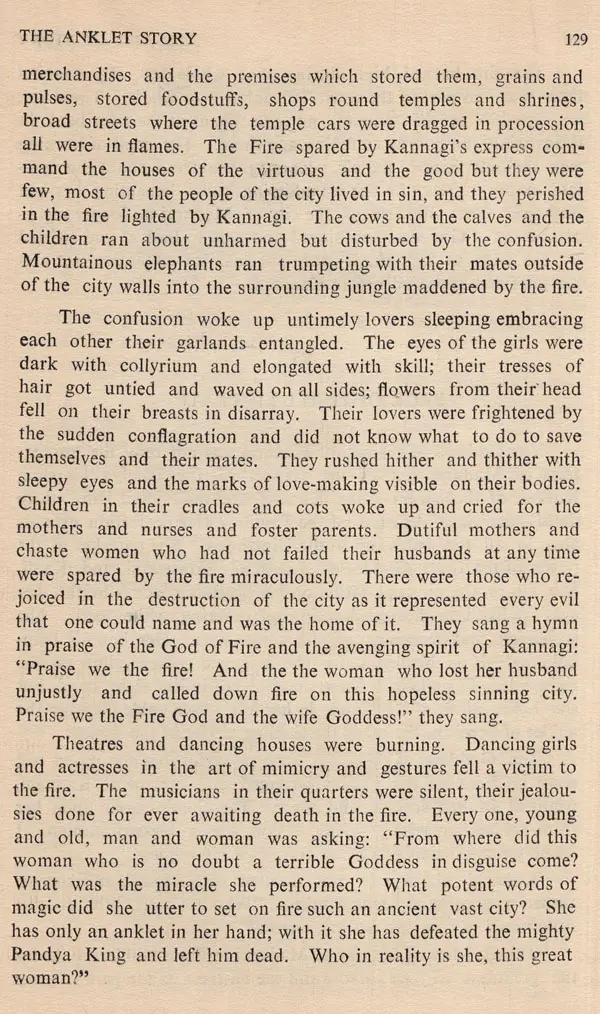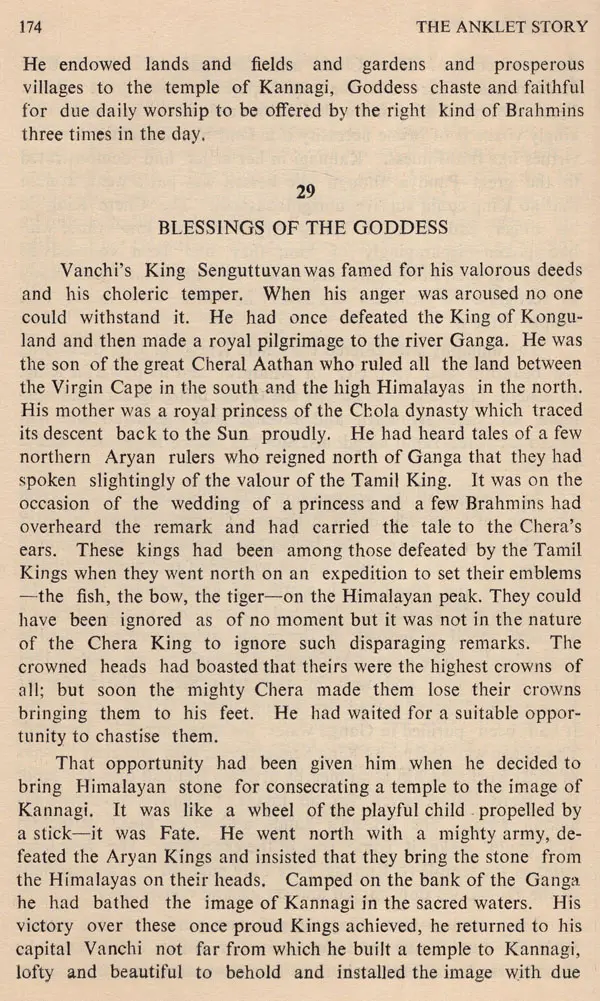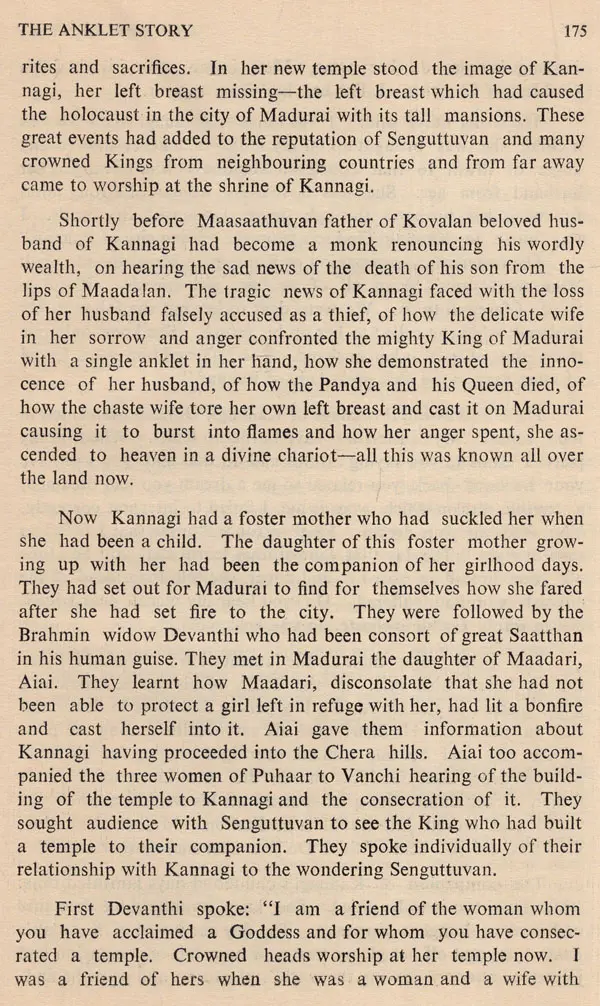
The Anklet Story (Silappadhikaaram of Ilango Adigal) (An Old and Rare Book)
Book Specification
| Item Code: | UAS673 |
| Author: | K. N. SUBRAMANYAM |
| Publisher: | Agam Kala Prakashan, Delhi |
| Language: | English |
| Edition: | 1977 |
| Pages: | 202 |
| Cover: | HARDCOVER |
| Other Details | 9.00 X 6.00 inch |
| Weight | 340 gm |
Book Description
SILAPPADHIKAARAM, or the Anklet Story is one of the five major epics of the Tamils, and easily the most literary and impressive and effective.
Variously dated from the 2nd to the 10th century it is a moral tale narrating how the results of past events overtake present lives. It incidentally explores how a mortal woman gets recognition as an immortal Goddess.
The epic is unique in that it has a heroine instead of a hero flouting epic conventions and in that it tells a highly emotional story in a literary manner that can be recognised as achieving emotional stasis. The body of the work is in blank verse and attempts a most realistic manner in spite of the supernatural etc. in it. It is interspersed with metrical compositions forming a rare collection of folk songs.
It is in 30 cantoes. It tells of the marriage of Kannagi to Kovalan, both of the merchant community. how Kovalan got estranged from Kannagi by love for a courtesar. Maadhavi, how after a time with her he came poor to his waiting faithful wife; how anxious to retrieve. his fortunes by setting up anew in trade with the proceeds of the sale of his wife's precious anklet, he reaches Madurai city. When Kovalan offered his wife's anklet for sale in Madurai he was accused by a thieving royal goldsmith of having stolen the Pandya Queen's anklet, and was killed without enquiry. Kannagi rose in sorrow and anger, demonstrated the innocence of her husband and brought about the King's death and set the city on fire. She then went into the Chera Kingdom and was hailed as a Goddess by the Gods and the hill tribes. The Chera King desirous of building a temple to Kannagi went on an expedition north reducing Aryan Kings to bring Himalayan stone for carving the image of Kannagi: he consecrated a temple to her at which many contemporary kings worshipped. The spic thus takes into its survey the three traditional kingdoms of the Tamils.
ILANGO ADIGAL is a consummate conscious artist and he uses the rhythms of speech for his blank verse and gives us ethnic, geographic, political, religious, artistic, cultural details that are very modern and refreshing. No doubt he was a Jain and detachment came easy to him.
SILAPPADHIKAARAM studied in a purely literary context will reveal claims to place llango Adigal beside the greatest epic poets of the world Homer and Dante.
SILAPPADHIKAARAM, the Anklet Story, belongs to the accepted canon of ancient Tamil texts. It is one of the five major epics of the Tamils, the second being MANIMEKALAI a sequel to Silappadhikaaram, the third, Jeevaka CHINTAMANI the fourth KUNDALAKESI and the last VALAIYAAPATHI listed not necessarily in chronological order. Only the first three are available in complete form, the other two being found only in references of the later commentators and some quotations. All five epics deal with merchants or vaiyas the third of the four traditional castes in India.
SILAPPADHIKAARAM is an epic of great literary importance. It differs from other epics in having a heroine as the fulfledged hero and is in blank verse which, in its quality and texture, is of a high perfection which is recognisable. It has historical, geographical, religious, legendary and mythological strands twisted into it, plaited would be a better word, which makes it interesting even as a human document. But the attempt of the poet seems to have been the tricky one of explaining how and why things happen as they do happen. Joy and pain are fruits of individual action, done in past lives or the present. Thus SILAPPADHIKAARAM fully subscribes to the theory of the reincarnation of men and to an order of beings who are somewhat intermediary called loosely Gods and Daemons, vidhyadharas etc. These are matters common to the general Indian tradition and are believed in by the majority of the Indian people-even if we are inclined to call them superstitions today.
Book's Contents and Sample Pages
